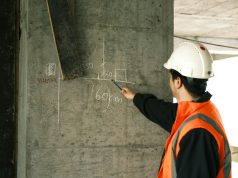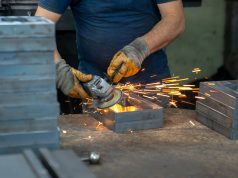
Are you tired of astronomical heating bills and drafty rooms that never seem to warm up? You’re not alone. With UK energy prices soaring by over 80% in recent years, millions of homeowners are desperately seeking solutions to slash their heating costs while improving home comfort. External wall insulation has emerged as the game-changing solution that’s transforming properties across Britain – delivering energy savings of up to 60% while simultaneously increasing property values and eliminating cold spots for good.
External wall insulation (EWI) involves applying insulation materials to the exterior walls of a building, creating a protective thermal barrier that wraps around the entire property. Unlike internal insulation, this system creates a continuous insulation layer that eliminates thermal bridges and dramatically improves energy efficiency. This approach is particularly effective for solid wall properties, which make up approximately 26% of UK housing stock and are notoriously difficult to heat efficiently.
The system typically consists of insulation boards fixed to external walls, followed by a protective render system and finishing materials. This not only improves thermal performance but also offers an opportunity to completely refresh your property’s appearance. Modern external wall insulation can transform tired-looking buildings into contemporary, energy-efficient homes that command higher market values.
Why External Wall Insulation Delivers Exceptional Results
The primary advantage of external wall insulation lies in its comprehensive approach to thermal efficiency. By wrapping the entire building envelope, it can reduce heat loss by up to 60%, translating to substantial savings on heating bills. With current energy prices, homeowners typically see a return on investment within 8-12 years – often sooner when factoring in increased property values and improved comfort.
Beyond energy savings, EWI eliminates cold spots and drafts that plague many UK homes, creating a more comfortable living environment year-round. The system also helps regulate internal temperatures, reducing the need for excessive heating in winter while keeping homes cooler during summer months. This thermal stability means more consistent comfort and lower energy consumption regardless of external weather conditions.
Properties with external wall insulation typically achieve better Energy Performance Certificate (EPC) ratings, which is becoming increasingly important for both sales and rentals. The improved EPC rating can be crucial for rental properties, where minimum energy efficiency requirements are becoming more stringent. Additionally, the external render system provides extra protection against weather damage, potentially extending your building’s lifespan and reducing long-term maintenance costs.
Understanding Your System Options
Several external wall insulation systems are available, each with specific advantages depending on your property and requirements. Expanded Polystyrene (EPS) is the most common and cost-effective option, offering good thermal performance and durability while being lightweight and easy to install. For those prioritizing fire resistance and acoustic properties, mineral wool systems provide superior performance, though at a higher cost.
Phenolic foam represents the high-performance option, providing excellent thermal efficiency in thinner applications. This makes it ideal for properties with planning restrictions or where maintaining window and door proportions is critical. For environmentally conscious homeowners, natural materials like wood fiber or cork offer good thermal performance alongside sustainability benefits.
The choice of system depends on various factors including your property’s construction type, existing insulation, budget, and specific performance requirements. Victorian terraces, for example, may require different solutions than modern cavity wall construction, while properties in exposed locations might benefit from more robust systems designed to handle severe weather conditions.
Installation Process and Professional Requirements
Most external wall insulation projects fall under permitted development rights, but it’s essential to verify requirements with local planning authorities. Building regulations approval is typically required, ensuring the system meets current thermal standards and safety requirements. Professional installation is crucial for warranty coverage and optimal performance, as qualified installers ensure proper preparation, fixing, and finishing while preventing issues like thermal bridging or moisture problems.
The installation process typically begins with a comprehensive property assessment to determine the most suitable system and identify any potential challenges. Preparation involves protecting surrounding areas, removing fixtures, and ensuring wall surfaces are clean and stable. The insulation boards are then mechanically fixed to the wall surface, followed by a base coat, reinforcement mesh, and final render system.
Timing is crucial for successful installation, with work ideally taking place during dry, mild weather conditions. Most systems require specific temperature ranges for optimal curing, making spring and autumn the preferred seasons. A typical installation on an average semi-detached house usually takes 1-2 weeks, depending on system complexity and weather conditions.
Investment Considerations and Financial Returns
External wall insulation represents a significant investment, with costs typically ranging from £8,000 to £15,000 for an average semi-detached house. However, this investment often pays for itself through reduced energy bills, with proper installation and quality materials typically achieving payback within 8-12 years. The additional benefits of improved comfort, increased property value, and reduced maintenance costs often justify the investment even sooner.
Various funding options are available to help homeowners invest in external wall insulation. The ECO4 scheme provides funding for eligible households, while local authorities often offer additional grants for energy efficiency improvements. It’s worth investigating these options early in your planning process, as application procedures can take time and funding may be limited.
When considering external wall insulation, it’s crucial to work with experienced professionals who understand both the technical requirements and local building practices. External wall insulation UK specialists provide careful planning, appropriate materials, and skilled installation to achieve optimal results.
Look for installers who are certified by relevant industry bodies such as the External Wall Insulation Association (EWIA) and can provide comprehensive warranties on both materials and workmanship. A reputable specialist will conduct a thorough property assessment, provide detailed quotations, and guide you through the entire process from planning permission to completion.
Long-term Performance and Future Benefits
Well-installed external wall insulation systems typically last 25-30 years with minimal maintenance, making them an excellent long-term investment. Regular visual inspections can identify potential issues early, while periodic cleaning maintains the system’s appearance. Most modern renders are designed to be self-cleaning, significantly reducing maintenance requirements compared to traditional wall finishes.
Building regulations continue to evolve toward higher energy efficiency standards, meaning installing external wall insulation now ensures your property meets future requirements while maximizing current benefits. New materials and techniques continue to improve system performance and installation efficiency, so working with forward-thinking specialists ensures you benefit from the latest innovations.
External wall insulation represents one of the most effective ways to improve your property’s energy efficiency, comfort, and value. While the initial investment is significant, the long-term benefits in terms of reduced energy costs, improved comfort, and increased property value make it an attractive option for many UK homeowners. Success depends on choosing the right system for your property and working with experienced professionals who can ensure proper installation and long-term performance.
As energy costs continue to rise and environmental regulations become more stringent, external wall insulation offers a practical solution that addresses both immediate comfort needs and long-term property value. Whether you’re motivated by cost savings, environmental responsibility, or simply wanting a more comfortable home, external wall insulation deserves serious consideration as part of your property improvement strategy.




